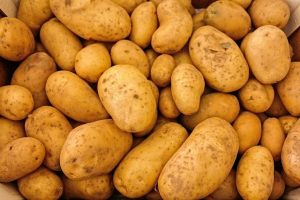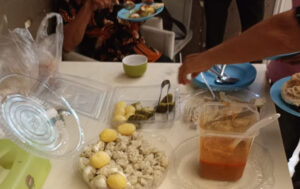Potato (Solanum tuberosum) is an important vegetable commodity in Indonesia having a good market, both as a vegetable and raw material for food processing industries. Because of the high demands, potatoes are expected in the future for diversification of carbohydrate sources that may increase sustainability and overcome poverity in Indonesia.
In Indonesia, potatoes are produced in 21 provinces, the biggest are in Sumatra and Java with the cropping area are around 64,148 ha. Demand for table and processing potatoes increases every year. The value of imported processing potatoes to Indonesia in 2007 was US$ 40 million whch was about 43,477 tonnes.
\
In 2008 (from January to September) processing potato imports reached 29,187 tonnes with value of US$ 28 million. In 2009 Indonesia imported 48,000 tonnes with value of US$ 33 million. Indonesian domestic potato production has increased steadily at over 3% per annum since 1997 and reached 1,176,304 tonnes in 2009 (Badan Pusat Statistik, 2011). Potato production is generally conventional and traditional or continuing from previous generations, so that yields are still low which is from 14.9 to16.4 tonnes/ha (average yield in Indonesia).
Many problems are found to increase potato production in Indonesia including:
(1) low quality and quantity of seed potatoes, which forms the main concern in the effort to increase potato production in Indonesia,
(2) current conventional cultivation techniques,
(3) topographic factors, where high areas with suitable temperatures for growing potatoes are very limited (Kuntjoro, 2000),
(4) the tropical conditions are optimum for the development of pests and disease of potato crops (Kuntjoro, 2000).
In NTB, potatoes are mainly cultivated in the Sembalun sub-district on the slopes of Mount Rinjani, from about 1,050 to 1,250 m asl. Potatoes are now the most important horticultural commodity for the Sembalun community.
The potato variety grown by Sembalun farmers is Atlantic with a yield of 18.2 tonnes/ha (BPTP NTB, 2009) which is still relatively low because in several potato studies in Indonesia the yield has been 35 tonnes/ha (BPTP NTB, 2009). Sembalun farmers can grow potatoes in the dry season as well as the wet season. In the wet season potatoes are planted in dryland that has a potential area of more than 1,500 ha and in the dry season potatoes are planted in paddy fields after the rice harvest in the months of June and July with a potential area of 1,105 ha. In 2010, the percentage of the paddy area used to produced potatoes was just 15 %. The main constraint to development of Atlantic potatoes in Sembalun is sub-optimal application of integrated crop management (ICM).
Farmers still predominantly use chemical fertiliser and do not use organic fertiliser although there is the potential to produce and develop the local organic fertiliser. Farmers are also accustomed to control pests and diseases with chemical pesticides without observing threshold levels indicating whether control is required or not, also apply mixtures of various pesticides together without paying attention to the active ingredients causing an impact on the important natural predators. The dominant use of chemical fertiliser and pesticides is the reason why potato enterprises have high costs. In fact the constant use of chemical fertiliser will damage the soil structure and make the soil hard (Nurmayulis and Maryati, 2008).
Furthermore, the excessive use of chemical pesticides will destroy the insect biodiversity and lead to the death of insects and other microorganisms antagonistic to pests and pathogens (Nurmayulis and Maryati, 2008). The constant practising of conventional potato production systems will reduce the profitability of farmers (BPTP NTB, 2009), and in the long term will cause environmental damage and the loss of biodiversity in this region (BPTP NTB, 2009).
Because of this, a sustainable and environmentally friendly plan to support agricultural development through the study of optimalising potato yield in the Sembalun highlands is needed. Sembalun is a small, isolated potato production area without specialist potato support services and so research into optimising potato production inputs will have to be carried out by the farmers themselves with local extension workers. To overcome the contraint of sub-optimal crop management a technique was required that enabled farmers to become their own researchers.
The technique used was a modification to the FFS methodology. The aim was to instigate demonstration plots that allowed the impact of single management changes to be measured by farmers. Previously the potato FFSs had compared an ICM plot versus a conventional plot. This resulted in a range of management changes between the plots which made it difficult to identify the cause of improvements in profits between the treatments. We call this improved methodology Farmer Initiated Learning (FIL).
This research aimed to help farmers develop and put into use a less costly potato production system that will significantly increase the ability of small farmers to take up potato production in the Sembalun highland.




Very nice post and right to the point. I am not sure if this is actually the
best place to ask but do you folks have any ideea where to hire some professional writers?
Thanks in advance 🙂 Lista escape roomów